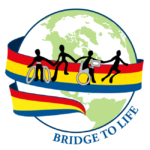Laying a Foundation for Family Centered and Evidenced Based AAC Interventions for Individuals with Cortical Visual Impairment and Complex Communication Needs
Tara McCarty, Lynn Elko
Feasible and appropriate AAC options for individuals with cortical visual impairment (CVI) are not (app)store-bought, ready-made, or prepackaged. These individuals require individualized, multimodal AAC systems that are carefully constructed by the thoughtful and data-driven decisions of families and service providers. Although ready-made aided AAC systems may be amenable to modifications tailored to the unique needs of an individual with CVI, these changes will not be effective until the team systematically examines the building blocks for successful communication. Many components make up the strong foundation for successful communication for individuals with CVI, including a family-centered approach, consideration of the individual’s specific CVI characteristics, responsibilities of the communication partner(s), and consideration of aided AAC design features. It is up to the team to lay a solid foundation for an AAC system that will be accessible to the individual across time, settings, and partners. This session will present CVI specific evidence-based recommendations which are applicable to individuals with CVI who require AAC. These recommendations are further illustrated in one family’s personal experiences building an individualized, multimodal AAC system for their daughter with CVI who became a successful AAC communicator.


